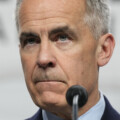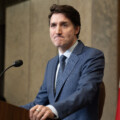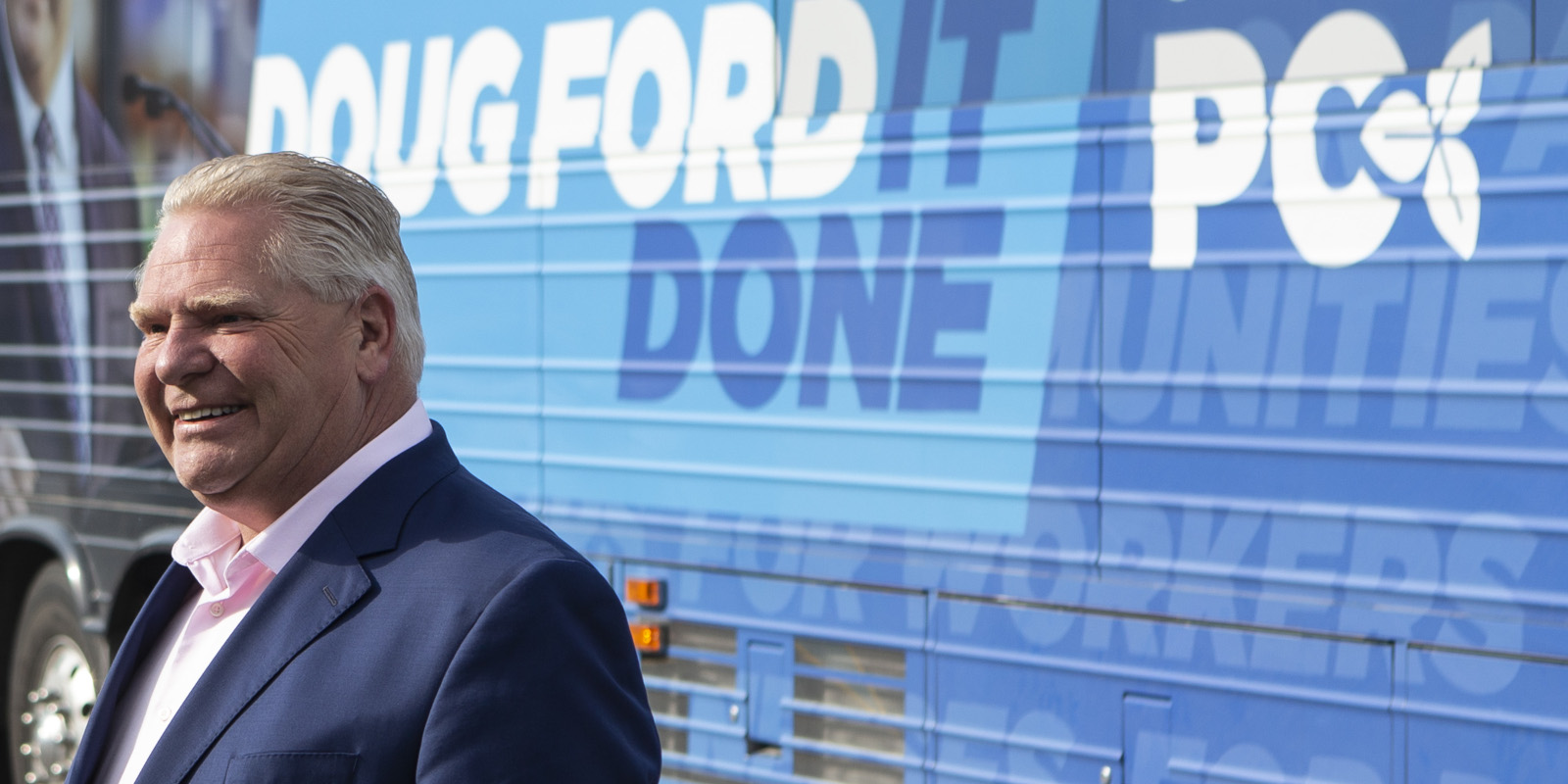A new poll shows Doug Ford’s Ontario Progressive Conservative Party solidly in the lead in the upcoming provincial election, but with a new right-wing party creeping up in the polls and possibly threatening Ford’s chance at a majority government.
The EKOS Research survey found the PCs with 34.5 percent support, compared to 26.7 percent for the Liberals and 24.1 percent for the NDP.
The poll also shows the Green Party with 6.6 percent support and the New Blue Party with 5.3 percent support ahead of the June 2 election.
“The New Blue (Party) could be a critical factor in deciding whether Doug Ford achieves the majority he is seeking,” said Frank Graves, the president of EKOS Research, in a statement accompanying the poll.
In an interview with The Hub, Graves said there are many possible outcomes and, although a New Blue surge that costs Ford a majority isn’t the likeliest scenario, it’s certainly possible.
“New Blue seems to be the analogue of the People’s Party of Canada which posed a similar threat to the CPC in the last election. In fact many of these voters are federal PPC supporters,” Graves told The Hub.
The EKOS poll puts the New Blue Party at about the same level of support as the PPC in Ontario during the last federal election. Post-election analysis conducted by Global News found that the PPC surge cost the Conservative Party six seats across the country, with five of them going to the Liberal Party.
The New Blue Party, which is led by former PC organizer Jim Karahalios and which features his wife, the former PC MLA Belinda Karahalios, was formed in late 2020 and has managed to run candidates in all 124 ridings in the province.
The party has campaigned on the premise that Ford’s PCs have governed as progressives, rather than progressive conservatives.
At a recent event in Ottawa’s west end, Jim Karahalios described the Ford government as “the provincial wing of the Justin Trudeau federal Liberal Party” and an “extension of the McGuinty-Wynne government.” His speech decried the industrial carbon tax brought in by the PCs and pointed out that even after removing COVID-19 spending, the size of government in Ontario has grown under Ford.
The EKOS poll shows that the PC vote tracks neatly with the federal Conservative Party’s support in Ontario and has managed to attract both lesser-educated voters and “self-defined upper class voters,” which Graves attributes to Ford’s approach to the economy.
Ford is still strong among voters who are part of what EKOS calls an “ordered populism” movement, which is defined by opposition to vaccine mandates and pandemic restrictions, mistrust in institutions, and economic pessimism.
Ford may also be assisted by the unpopularity of his rivals, with Liberal leader Steven Del Duca getting a favourable rating from only 14 percent of respondents. If the trends from the EKOS survey continue through the next week, the PCs will continue to hold the most seats in the legislature. The size of the PC advantage will be determined by whether the progressive parties can turn the campaign around in its final days and whether the New Blue Party continues to rise in the polls ahead of the June 2 election.
“Doug Ford is on a clear path to form government with eight days to go,” said Graves. “What remains open is whether it will be a stable majority or a less stable minority”.
Recommended for You

Laura David: Red pill, blue pill: Google has made its opening salvo in the AI-news war. What’s Canadian media’s next move?

The Notebook by Theo Argitis: Mark Carney’s first major tests

The Weekly Wrap: Trudeau left Canada in terrible fiscal shape—and now Carney’s on clean-up duty

Ben Woodfinden: Lament for an ‘elbows up’ nation



